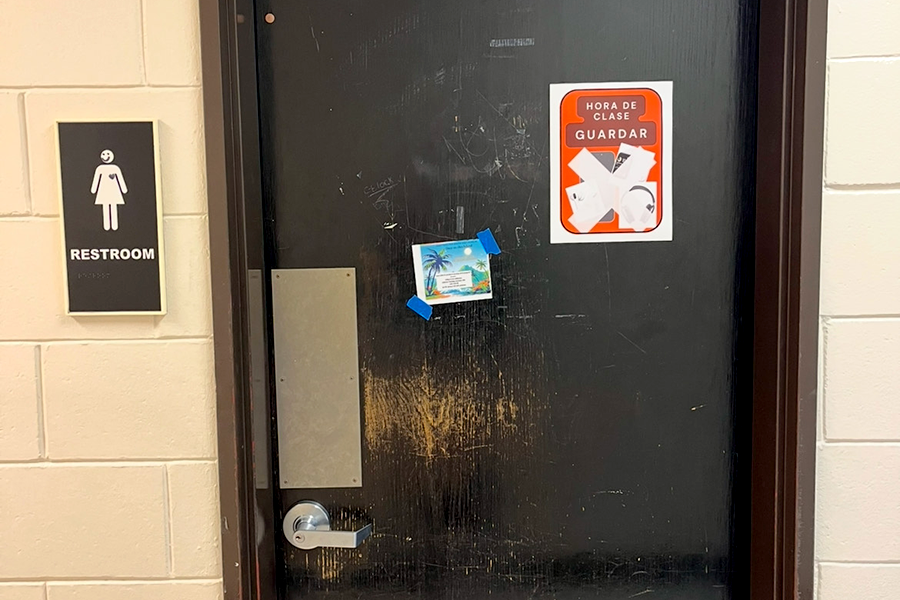“Let’s teach kids to think outside the box, not fill in circles!” read a sign held in support of a testing boycott in Seattle. The teachers at the city’s Garfield High School opposed administration of the Measures of Academic Progress test, or MAP, by refusing to give it to their students.
The teachers released a statement saying that they “cannot continue to participate in a practice that harms our school and our students.” The majority of the school’s faculty supported the boycott, making them the first to collectively protest administration of the test, which is used across the nation.
Closer to home, Public Education Justice Alliance of Minnesota, or PEJAM, has been leading a campaign against high-stakes testing, or tests whose results have serious implications for the test takers, such as college admission or graduation. They have spoken to the school board in opposition of the MAP test, which is administered by district decision and not by mandate. Robert Panning-Miller, a social studies teacher at South, is one of the founders of the organization. He said that PEJAM has been “inspired by the Seattle teachers” in their work against the MAP test.
The MAP test is administered so that “student growth can be monitored” and to “provide information to help inform instructional decisions,” according to the Northwest Evaluation Administration, which creates and distributes the MAP. Some opponents say that the test is not effective enough for these purposes to justify the cost.
“It’s a huge expense of time and money that could be better spent doing anything that would have more educational merit to it than sitting in front of a computer screen filling in bubbles,” Panning-Miller said of the test. Although he has only taken action against the MAP so far, Panning-Miller said, “ultimately all the high stakes standardized testing should go.”
Besides of the time and money spent on testing, there is also the concern that educators will choose to teach certain material because it will help students score higher on tests. Programs that link fund ing or evaluations of teacher performance to test scores provide motivation to do this.
Senior Cole Johnson-Jensen said that in his fourth grade classroom they “literally had days when we would practice how to fill in bubble sheets.” At South, the majority of students surveyed said that their education had been heavily based on testing, giving it a 6.9 out of 10.
Test distributors say that the time and resources spent on testing could be justified if looking at the scores helped teachers provide a better education to students. One of the stated aims of the MAP test is to help teachers understand students by, for example, looking at their reading scores to see why they are having trouble in history. Panning-Miller said, “I can usually figure out who’s having issues in reading without looking at their test scores. I can usually guess their test scores based on what I’ve seen in class.”
David Rathbun, an English teacher, said that “only through a holistic classroom approach can you appreciate those things a student can do.” As tests are often used to assess and quantify student skills, inaccurate results could have serious implications for students, which could be either positive or negative.
There are specific skills that help students do well when testing, separate from the skills involved in the subject they’re being tested on. Rathbun said that a high reading score “doesn’t mean (a student) could critically read something, or read between the lines or some of these more subtle things that are very important that you can’t catch so easily on a standardized test.”
73% of South students surveyed said they did not feel that standardized tests show their skill level. Panning-Miller identified the MAP test in particular as being inaccurate. “(The) margin of error is generally greater than the difference of grade levels that student’s are supposed to move … It could show they went down a grade when in fact they went up half a grade,” he noted.
Some students may also come into the test at a substantial disadvantage. “There’s a certain bias involved in constructing the questions, a certain cultural bias, and many students don’t come to the test with that extra cultural background that more educated, more affluent students might have,” Rathbun said.
Ruun Abdisamed, a sophomore, said, “The kinds of questions [on the test] aren’t good for everyone.” Often this can make schools that serve low-income districts appear to be ineffective when assessed with tests meant to measure accordance with standards, such as the MCAs. Students may have made substantial gains, but still appear to be failing.
MCA test scores have been used as a factor in teacher evaluations in some places, including Seattle, where protesters cited this as a flaw in the testing system. The test’s creators advised that the test should not be used for this purpose. Knowing that this may put their salary or employment at risk, fewer teachers will be willing to work in the schools where they are needed most, including low-income areas that often score lower.
Another factor that may affect student’s scores is stress. 75% of South students surveyed said that they feel that they face pressure to perform well on tests.
Abdisamed said, “I feel pressure [from] my parents and my religion because they want me to be successful. Somali people aren’t shown to be successful. The pressure builds, so I do a lot worse.”
“We’re into a culture of assessment and judging,” Rathbun said. Many students’ long term goals, such as attending college, seem to rest on their ability to perform well on standardized tests. An enormous amount of importance is placed on scores.
“Because you perform well on a standardized test could mean in one way you’re just getting really skilled at taking a test; that’s all it proves,” Rathbun said. He also stated, “There’s no correlation between standardized test scores and success in college.”
The Garfield boycott and the efforts of PEJAM may show a movement away from a testing focused system. Many supporters feel that the attention towards testing is detrimental to education. Panning-Miller said, “We have created a culture where people think that those test scores are meaningful. They are close to meaningless… People put an incredible amount of weight on test scores to the detriment of real educational experiences.”







